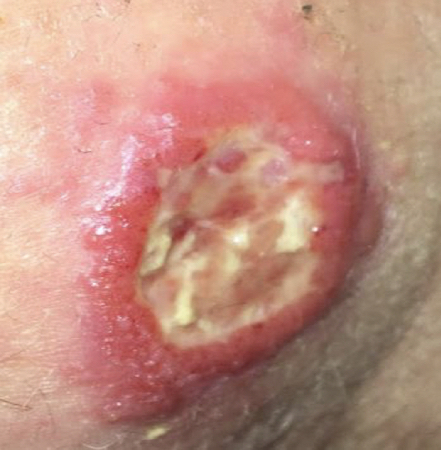Summary
Definition
History and exam
Key diagnostic factors
- previous stay in endemic area
- immunosuppression
- prolonged fever
- weight loss
- ulcerative skin lesions
- presence of risk factors
- multiple non-ulcerative skin nodules
- destructive mucosal inflammation
- splenomegaly
- skin darkening
Other diagnostic factors
- fatigue
- cough
- headache
- wasting
- enlarged lymph nodes
- hepatomegaly
- previous anti-leishmanial treatment
- epistaxis
- abdominal pain
Risk factors
- high exposure to sand fly bites
- poverty
- proximity to a patient with a history of infection
- ownership of domestic animals
- immunosuppression
Diagnostic investigations
1st investigations to order
- FBC
- liver function tests and urea/creatinine
- serum human chorionic gonadotrophin (hCG)
Investigations to consider
- microscopic examination of relevant specimen
- blood (buffy coat) or tissue culture
- polymerase chain reaction (PCR)
- serology
- leishmanin skin test (Montenegro skin test)
- serum HIV testing
Treatment algorithm
Contributors
Authors
Naomi E. Aronson, MD
Professor of Medicine
Director, Infectious Diseases Division
Uniformed Services University of the Health Sciences
Bethesda
MD
Disclosures
NEA receives federal grants to study leishmaniasis (received by NEA's institution USU), has given lectures on the topic of leishmaniasis at national and international meetings, and has a patent on biomarkers for leishmaniasis. NEA has received honoraria from the Welcome Trust. NEA's institution USU has received royalties for her writing and editorial work for UpToDate. NEA is an author of a number of references cited in this topic. The views expressed in this topic are those of the authors and do not reflect the official policy of the Department of Army/Navy/Air Force, the Department of Defense, or the US Government.
Nathanial K. Copeland, MD, MTM&H
Assistant Professor of Medicine
Uniformed Services University of the Health Sciences
Bethesda
MD
Disclosures
NKC is an author of a number of references cited in this topic. The views expressed in this topic are those of the authors and do not reflect the official policy of the Department of Army/Navy/Air Force, the Department of Defense, or the US Government.
Acknowledgements
Professor Naomi E. Aronson and Dr Nathanial K. Copeland would like to gratefully acknowledge Professor Richard Reithinger and Professor François Chappuis, previous contributors to this topic.
Disclosures
RR and FC are authors of a number of references cited in this topic.
Peer reviewers
Roberto Arenas, MD
Chief of the Mycology Section
Dr. Manuel Gea Gonzalez General Hospital
Mexico
Disclosures
RA is the author of an article cited in this topic.
Use of this content is subject to our disclaimer
